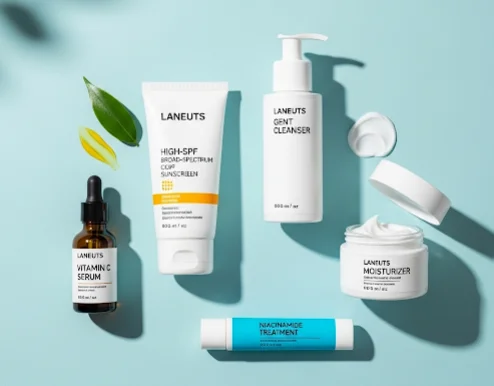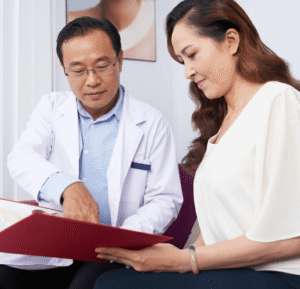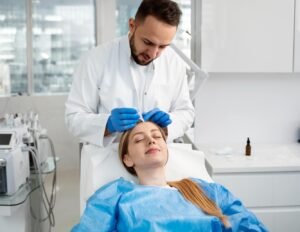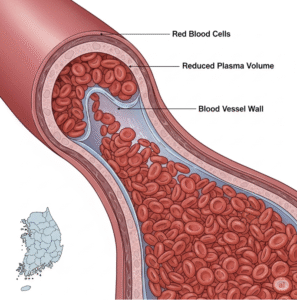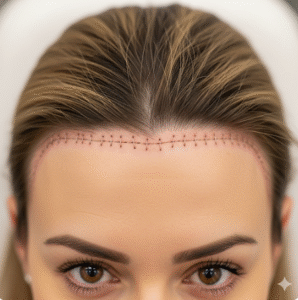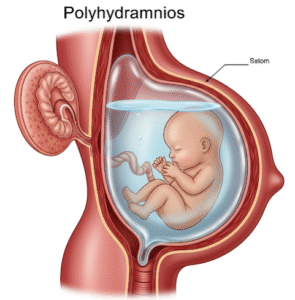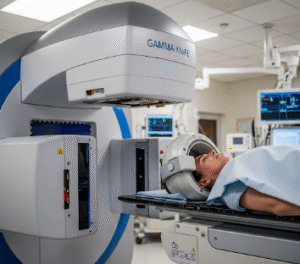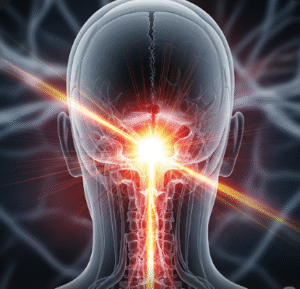PIH Prevention Regimen in Korea is a holistic approach to reducing the risk of post-inflammatory hyperpigmentation (PIH), a condition where dark spots form after acne, eczema, burns, cosmetic procedures, or other skin inflammation. While PIH is harmless, it can be persistent and emotionally distressing—especially in Asian skin, which is more prone to pigmentation.
Korea, famous for its science-backed skincare innovations, has developed highly effective regimens for preventing PIH. These include a combination of daily skincare routines, in-clinic treatments, lifestyle habits, and preventive dermatological care. Korean dermatologists emphasize prevention over correction, making PIH prevention an integral part of the broader K-beauty philosophy.
What It Is
Post-inflammatory hyperpigmentation occurs when the skin overproduces melanin in response to injury or inflammation. It appears as flat brown, black, or dark gray spots that linger after the initial wound or acne heals.
Triggers for PIH include:
- Acne breakouts.
- Eczema and dermatitis.
- Burns, cuts, or insect bites.
- Cosmetic procedures like chemical peels, microneedling, or lasers.
- Aggressive skincare products that disrupt the skin barrier.
Korean PIH prevention regimens focus on reducing inflammation quickly, protecting the skin barrier, and controlling melanin production.
Why It’s Done
PIH prevention in Korea is practiced because:
- Cosmetic reasons → Clear, bright skin is central to Korean beauty ideals.
- Emotional well-being → Preventing dark spots reduces stress and boosts confidence.
- Skin health → Protecting against PIH ensures long-term resilience of the skin barrier.
- Efficiency → Prevention is easier, safer, and more cost-effective than treating stubborn pigmentation later.
Because PIH is difficult to remove once it sets in, Korean dermatologists emphasize early and proactive measures.
Alternatives
If prevention is not fully effective and PIH develops, Korean clinics offer treatments:
- Q-switched Nd:YAG laser toning → Gentle melanin fragmentation.
- Pico toning (PicoWay, PicoSure Pro) → Advanced precision treatment.
- Chemical peels → Mild glycolic or lactic acid peels to accelerate turnover.
- Spectra/Carbon Laser Peel → For acne-related PIH.
- Topical brightening creams → Hydroquinone, retinoids, Vitamin C.
- At-home K-beauty serums → Niacinamide, arbutin, tranexamic acid.
Preparation
Korean PIH prevention regimens begin with education and skin analysis:
- Consultation → Dermatologists use imaging tools to measure melanin levels and skin barrier health.
- Skin type assessment → Sensitive or acne-prone skin requires gentler regimens.
- Lifestyle evaluation → Diet, sun exposure, and stress are considered.
- Custom skincare planning → A structured daily regimen is built, often blending medical-grade and K-beauty products.
How It’s Done
PIH prevention in Korea typically combines at-home routines, professional treatments, and lifestyle adjustments:
- Daily skincare routine
- Gentle cleansing → Mild, pH-balanced cleansers to avoid irritation.
- Barrier repair → Moisturizers with ceramides, hyaluronic acid, or centella asiatica.
- Anti-inflammatory serums → Niacinamide, panthenol, and green tea extracts.
- Brightening ingredients → Vitamin C, arbutin, and tranexamic acid to control melanin.
- Sunscreen → Daily SPF 50+ (the cornerstone of PIH prevention).
- In-clinic preventive care
- Aqua Peel or Hydrafacial → Deep cleansing to reduce acne breakouts.
- LED light therapy → Calms inflammation and promotes healing.
- Mild laser toning → Prevents PIH in acne-prone patients.
- Preventive chemical peels → Gentle exfoliation under professional supervision.
- Lifestyle adjustments
- Avoiding direct UV exposure (umbrellas, hats, tinted sunscreens).
- Managing stress and sleep to reduce inflammatory responses.
- Following a diet rich in antioxidants (fruits, vegetables, green tea).
Recovery
PIH prevention focuses less on “recovery” and more on long-term consistency:
- After acne or procedures → Use soothing creams with centella asiatica or madecassoside to calm inflammation quickly.
- Daily maintenance → Consistent sunscreen and brightening serums help prevent melanin buildup.
- Monthly care → Many Koreans visit clinics monthly for facials or mild treatments to prevent flare-ups.
Korean clinics often provide aftercare kits post-procedures to ensure patients avoid PIH.
Complications
If PIH prevention is neglected, complications may occur:
- Persistent pigmentation → Spots that last months or years.
- Rebound pigmentation → Darkening after aggressive treatments.
- Uneven skin tone → Long-term damage to complexion.
Korean dermatologists minimize risks by recommending gradual, non-aggressive care rather than harsh procedures that may worsen PIH.
Treatment Options
Korean clinics and skincare brands offer specialized PIH prevention programs:
- Preventive laser toning → Gentle low-fluence Nd:YAG sessions.
- Brightening programs → Vitamin C infusion, tranexamic acid ampoules, and whitening masks.
- Anti-inflammatory care packages → LED therapy plus centella-based facials.
- Combination packages → PIH prevention plus acne treatment.
- Maintenance programs → Long-term skincare memberships with monthly preventive sessions.
Seoul clinics, particularly in Gangnam, offer structured packages to make preventive care both affordable and accessible.
Conclusion
PIH Prevention Regimen in Korea reflects the nation’s unique skincare philosophy of prevention, consistency, and holistic care. By combining daily routines, professional treatments, and lifestyle habits, Korean dermatologists and skincare experts help patients avoid stubborn pigmentation before it becomes a problem.
With a culture that values clear and radiant skin, Korea has become a global leader in PIH prevention. For those prone to pigmentation, adopting a Korean-style preventive regimen offers one of the most effective ways to maintain skin clarity, health, and long-term confidence.

